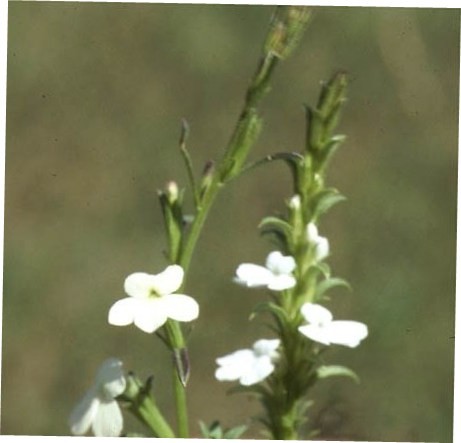Denseflower Witchweed
(Striga densiflora)

Description
Striga densiflora is a species of flowering plant. It was first described by George Bentham, and given the exact name of George Bentham. Striga densiflora belongs to the genus Striga, and family Orobanchaceae. Striga, commonly known as witchweed, is a genus of parasitic plants that occur naturally in parts of Africa, Asia, and Australia. It is in the family Orobanchaceae. Some species are serious pathogens of cereal crops, with the greatest effects being in savanna agriculture in Africa. It also causes considerable crop losses in other regions, including other tropical and subtropical crops in its native range and in the Americas. Witchweeds are characterized by bright-green stems and leaves and small, brightly colored and attractive flowers. They are obligate hemiparasites of roots and require a living host for germination and initial development, though they can then survive on their own. The genus is classified in the family Orobanchaceae, although older classifications place it in the Scrophulariaceae. The number of species is uncertain, but may exceed 40 by some counts. Although most species of Striga are not pathogens that affect human agriculture, some species have devastating effects upon crops, particularly those planted by subsistence farmers. Crops most commonly affected are corn, sorghum, rice and sugarcane. Three species cause the most damage: Striga asiatica, S. gesnerioides, and S. hermonthica. Witchweed parasitizes maize, millet, sorghum, sugarcane, rice, legumes, and a range of weedy grasses. It is capable of significantly reducing yields, in some cases wiping out the entire crop. Host plant symptoms, such as stunting, wilting, and chlorosis, are similar to those seen from severe drought damage, nutrient deficiency, and vascular disease. Each plant is capable of producing between 90,000 and 500,000 seeds, which may remain viable in the soil for over 10 years. Most seeds produced are not viable. An annual plant, witchweed overwinters in the seed stage. Its seeds germinate in the presence of host root exudate, and develop haustoria which penetrate host root cells. Host root exudate contain strigolactones, signaling molecules that promote striga seed germination.
Taxonomic tree:







